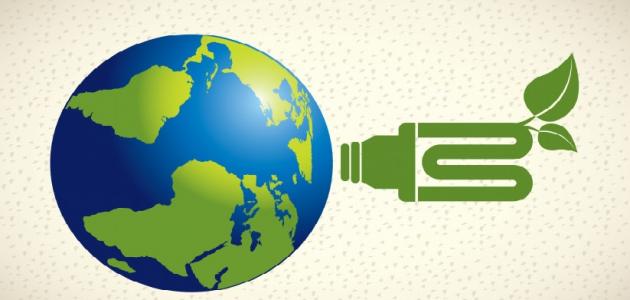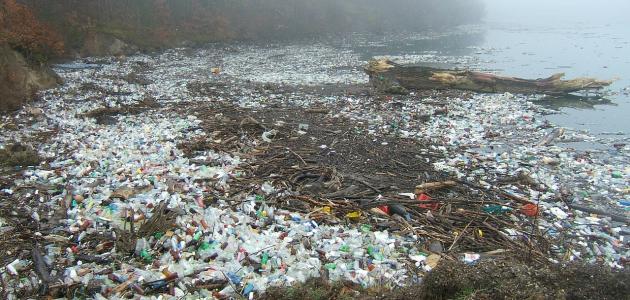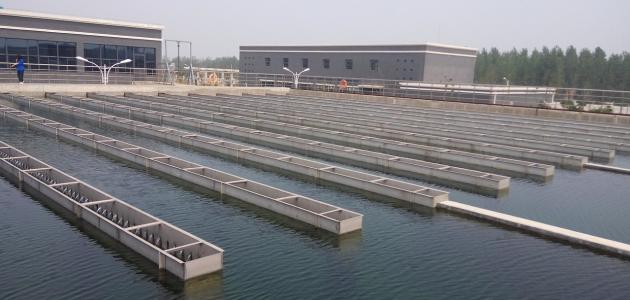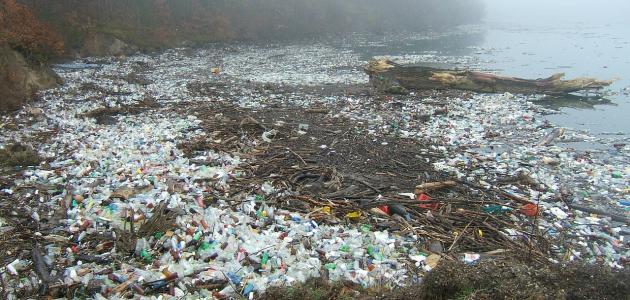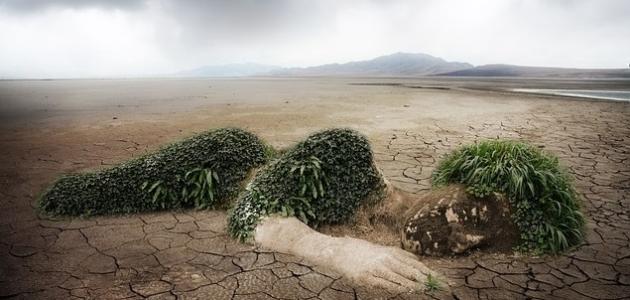Means of preserving the environment
The world is witnessing continuous and increasing development with time, as the construction of highways and airports and ports is expanding, and with the growth of cities and the increase in population, the need for wastewater treatment plants increases, and the need to follow intensive methods in agriculture appears to meet the increasing needs for food, and these changes Great impacts and risks on the environment. Therefore, the authorities concerned with preserving the environment have created ways and means to protect the environment and reduce the risks that threaten it and human life, including these means:
Individual means
There is a great impact on individuals’ awareness of their environment and their contribution in simple steps to preserving the environment and its natural resources. Reducing the use of vehicles, for example, reduces expenses on the individual and reduces pollution in the environment. Below are some individual means and practices that will help preserve the environment:
Reducing waste
Every individual can contribute to reducing waste and polluting materials to the environment, by choosing some methods that greatly help in reducing waste production. The most important of these methods are:
- Purchase materials as much as needed, and thus everything purchased is used, thus reducing materials that may not be used and end up in garbage, especially materials that are hazardous to the environment, such as: paint and chemicals.
- Reduce the materials used in wrapping and packaging, and purchase materials packaged in easily recyclable containers.
- Use reusable water bottles instead of buying bottled water.
- Reducing the purchase of materials packaged in individual containers, and replacing family containers with them, thus reducing waste that is difficult to dispose of, such as plastic.
- Recycling by separating recyclable waste in designated places.
- Use cloth bags, and do not use plastic bags to transport grocery purchases, to reduce the amount of bags thrown in the waste.
reuse
Reusable materials are materials that are possible and safe to reuse several times, and reuse usually has a significant impact in reducing the amount of waste. Examples include:
Read also:Information about rationalizing consumption- Use food storage containers that can be washed and reused multiple times instead of single-use plastic bags.
- Use reusable glass cups to drink water and juices instead of single-use paper and plastic cups.
There are things that may become old or useless for some, but it is still possible not to throw them into waste, and to look at them as things that can be reused to solve problems or meet daily needs. This not only reduces waste, but also saves money, conserves resources, and satisfies desire. Humanity in creativity, and here are some examples of reuse:
- Reuse wrapping paper, plastic bags, boxes and wooden pieces.
- Replace bags that can be reused several times with plastic shopping bags.
- Donate surplus clothing, old furniture, and household items to friends or charity.
- Renewing old furniture by upholstering and painting it.
- Donate broken appliances to vocational schools for use in art classes or to learn to repair things.
- Use leaves on both sides.
- Donate books and magazines to schools or libraries.
- Cut old towels and sheets and use them to dust and clean.
- Use old tires in gardens and playgrounds.
Recycling
Through the recycling process, it is possible to collect discarded materials and convert them into new products and materials. Recycling processes have positive effects on society and the environment, as they save money, preserve natural resources, and protect the environment, as it requires the production of new materials and products. Finding, manufacturing, and transporting primary raw materials, which means wasting more resources. Below are some examples of materials that are manufactured from the recycling process:
Read also:What diseases are caused by water pollution- Recycling used aluminum cans to produce new cans.
- Recycling aluminum used in appliances, bicycle frames and cars.
- Recycle soda bottles and make a rug, for example.
- Recycling glass to make new glass containers, fiberglass, or turning it into sand for use in paving roads.
- Recycling plastic bottles to make new plastic containers, making sleeping bags, making the insulating layer in ski jackets, etc.
- Recycling paper and paperboard to recycle paper and paperboard, paper towels, egg cartons, building insulation materials, gypsum boards, paper plates, etc.
Waste diversion
The process of converting waste or natural composting (in English: Composting) provides a partial solution to the issue of waste disposal in harmless ways. Instead of burning waste, raw organic waste is collected and placed in special conditions to decompose naturally and produce biologically stable materials that can be stored without an unpleasant odor. Thus It produces natural organic fertilizer that improves soil quality.
This natural fertilizer has many benefits for the environment, some of which are as follows:
- Natural fertilizer helps the soil - especially sandy soil - retain the appropriate moisture, and reduces water runoff from it, which reduces the use of more water to irrigate plants.
- It benefits the environment by recycling organic materials, saving a lot of space in landfills.
- It reduces the need for artificial fertilizers and maintains the balance of soil acidity.
- It increases the soil content of organic matter and nutrients, improves plant growth, and improves the structure of their roots.
- Attracts earthworms and beneficial microbes, reduces weeds.
- It helps control soil erosion processes.
- Maintains the soil temperature by making it moderate.
Other ways to preserve the environment
Here are ten simple individual actions you can take to help protect the environment:
Read also:How to preserve the soil- Preserving natural resources and reducing the volume of waste by following the three types of waste reduction, reuse, and recycle.
- Volunteering in nature cleaning activities and participating in maintaining its cleanliness.
- Learn and raise awareness about the environment, and help others understand the importance and value of natural resources.
- Preserving water by rationalizing consumption, as this reduces surface water runoff and reduces wastewater that pollutes the environment.
- Focus on supporting sustainability and not depleting natural resources.
- Shop wisely by purchasing less plastic, and using a reusable shopping bag.
- Rationalizing the use of electrical energy, and choosing energy-saving lamps, as rationalizing the use of electrical energy reduces greenhouse gas emissions produced by electricity generation plants.
- Planting trees, as trees are a source of food and oxygen, help clean the air, and prevent climate change.
- Reducing the use of chemicals and preventing their leakage into waterways.
- Reducing the use of vehicles, and adopting alternative means such as riding bicycles.
Legal and legislative means
Some international and local bodies enact laws, policies, and directives that regulate human dealings with the environment, which are implemented at all local, international, and national levels. These laws include standards, initiatives, treaties, and other topics, such as: standards that regulate emissions from power plants. Coal-fired plants in Germany, initiatives in China to create a belt of trees to protect Beijing from sandstorms, and international treaties to protect biodiversity and the ozone layer. Environmental law has evolved in the late twentieth century from an appendix to the law of public health regulations into an independent, globally recognized field that protects human health. And nature, as environmental laws play a major role in protecting land and natural resources, and protecting humans and animals from pollution, overfishing, and the spread of diseases. Without these laws, governments will not be able to impose deterrent penalties for those who mistreat the environment, as neglecting these laws will result in penalties. Various types of cases, such as community service or paying fines, may lead to imprisonment in extreme cases.
Environmental laws cover a wide range of topics, including the following:
- Air quality and quality: Air Quality: These laws protect the air from pollution, and may include measures to protect the ozone layer.
- Water quality: (in English: Water Quality), environmental laws protect water from pollution, and also determine how to manage water resources, and how to deal with potential problems such as dealing with surface water runoff and treating wastewater.
- trash mangment: (in English: Waste Management), environmental laws govern the methods of managing and treating household waste, treating hazardous materials, and nuclear waste.
- Cleaning pollutants: Contaminant Cleanup: These laws deal with pollution after it occurs, and include protocols for cleaning up pollution, and civil and criminal penalties for those causing it.
- Safety from the dangers of chemicals: (In English: Chemical Safety), these regulations manage everything related to preventing or reducing the risks of chemicals, such as pesticides, and the chemicals that are included in the composition of plastic bottles.
- the hunt: (In English: Hunting and Fishing), environmental laws regulate and protect wildlife, including hunting animals and fish, determine who is authorized to hunt, and decide how to organize these activities.
Interest in environmental laws began to increase after the emergence of global environmental problems in recent years. The United Nations Conference on Environment and Development (UNCED), or the so-called Earth Summit, encouraged Held in 1992 - international cooperation and action regarding global environmental issues, such as: the problem of global warming, ozone layer depletion, acid rain, desertification, pollution in developing countries, transboundary hazardous waste management, and so on.
The summit drafted global agreements for sustainable development, and efforts were made to adopt an action plan to follow up on treaties related to many categories of environmental problems. In May 1993, the second meeting of the Commission on Sustainable Development was held to follow up on decisions Earth Summit to conduct direct studies on trade problems related to the environment and hazardous chemicals. The United Nations Convention to Combat Desertification was also ratified at the fifth meeting of the Intergovernmental Negotiating Conference in June. June 1994 AD, and the United Nations Convention on the Law of the Sea entered into force in November 1994 AD, and in the same month the Convention on Biological Diversity was held, and in March 1995 AD, it was concluded The first conference of members of the United Nations Convention on Climate Change was held.
